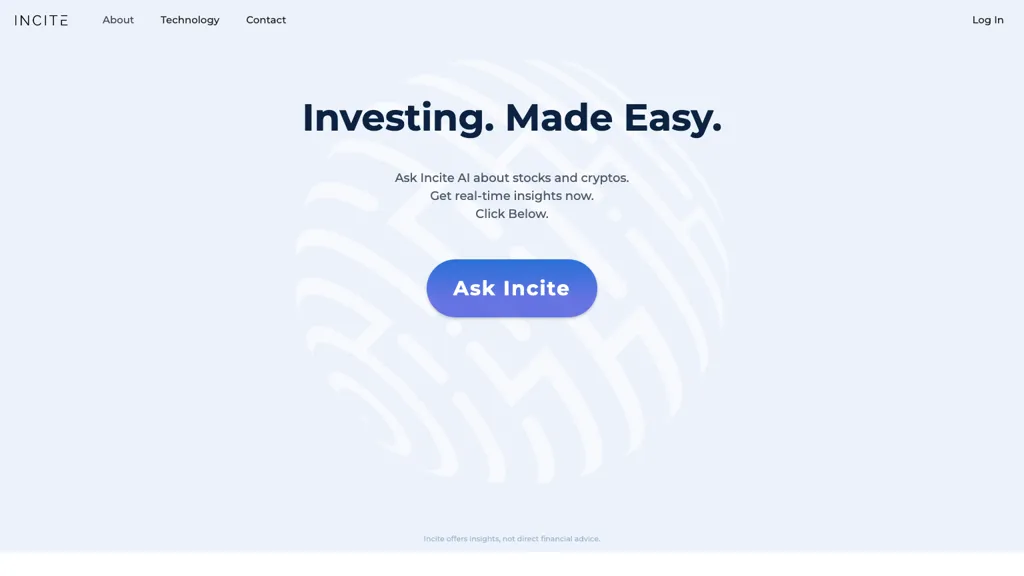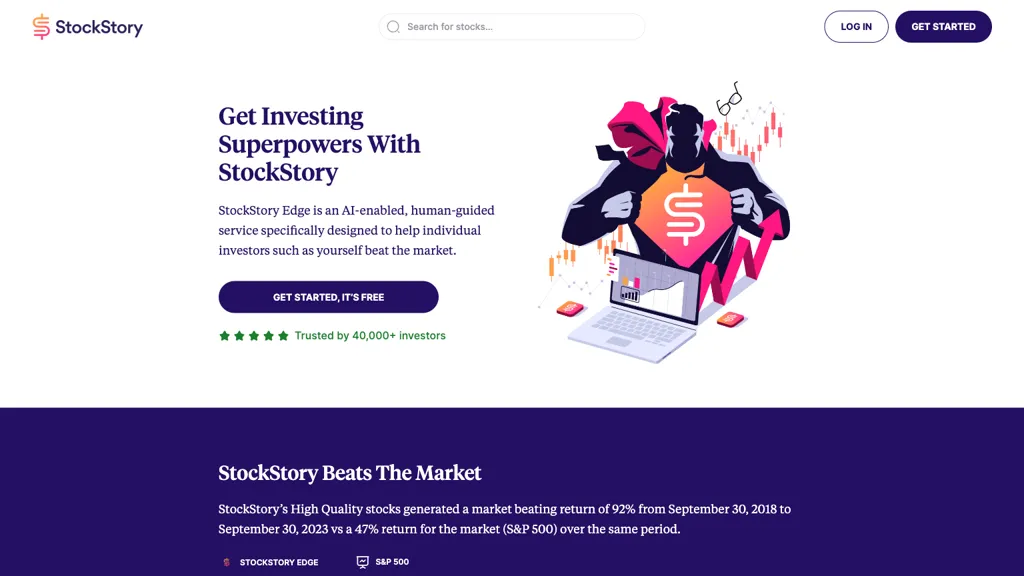Top 10 Tips To Assess The Security And Privacy Of Ai Trading Platforms
Security and privacy are paramount when making use of AI stock Predicting/Analyzing trading platforms since they are often handling sensitive financial as well as personal data. Data breaches or mishandling could result in reputational and financial damage. Here are 10 tips to assess the security and privacy of these platforms.
1. Examine Data Encryption
Secure transmission of data: Make sure the application uses secure protocols (e.g. TLS/SSL) to encrypt data transmitted between your device and their servers.
In-rest encryption: Check that sensitive information stored on platform servers are secured with strong encryption standards.
End-to-end encrypted communication: Make sure that the service you're using provides encryption that is complete for sensitive data.
2. Examine the authentication mechanisms
Two-factor authentication (copyright): Make sure that the platform you are using supports this in order to provide additional security.
Make sure you have biometric authentication.
Password policy: Check to find out if your provider has strict guidelines on passwords.
3. Examine for Regulatory Compliance
Financial Regulations: Ensure that the platform is compliant with applicable financial regulations.
Data privacy laws: Ensure you comply with any data privacy laws that are applicable to your business, if applicable (e.g. CCPA or GDPR).
Audit certifications - Check to see if the platform is certified or has had third-party security audits (e.g. SOC 2, ISO 27001).
Review Data Access Controls
Role-Based Access: Ensure that the platform is using role-based access controls (RBAC), to limit data-access to authorized individuals.
Permission levels - Make sure that you are able to give different permissions to members or members.
Activity monitoring: Determine if the platform monitors and logs user behavior for suspicious behaviour.
5. Assess the vulnerability of your organization.
Regular updates: Ensure that the platform is regularly updated to fix vulnerabilities.
Make sure that your platform is regularly screened for penetration testing in order to identify security vulnerabilities and then fix them.
Check for bug bounty programs. They're designed to motivate external security researchers (such as Google) to share security issues.
6. Evaluate Data Privacy Policies
Transparency - Review the privacy policy of the platform in order to understand the ways in which data is collected, shared, and utilized.
Data minimization - Make sure that the platform collects the information that it needs for its operation.
Third-party Sharing: Determine if the platform shares its data with third parties and, if yes and under what conditions.
7. Secure API Utilization is Checked
API security: Ensure the API of the platform API uses authenticated methods that are secure (e.g., OAuth, API keys) and also encrypts data exchanges.
Rate limiting - Verify that the API is fitted with rate limitations to prevent abuses or brute force attacks.
Access logs: Check if the platform logs API access and usage for monitoring and auditing.
8. Assess the Recovery and Response to Incidents
Plans for incident response: Check that the platform you're using has a clearly-defined incident response plan. The plan should include handling security breaches and data breaches.
Policies for notification: Make sure that users are promptly notified in case of a security breach.
Data backups: Check if the platform regularly backs up the data it stores and has a disaster recovery plan in place.
9. Evaluation of Physical Security Measures
Security of the data center: Make sure your platform's servers are housed in secure data centers that have physical security measures (e.g. monitoring, access controls).
Redundancy - Verify that the platform is equipped with redundant systems in order to guarantee data availability even in the event that hardware fails.
Geographic distribution: Make sure that data is distributed over multiple geographical locations to increase the resilience.
10. Test privacy controls on users
Data deletion - Make sure that you can delete all personal data completely from the website when and when you cease using its services.
Privacy settings: Make sure that there are privacy settings available that permit you to limit the information shared and visible.
Anonymization: Find out whether the platform can anonymize data used for machine learning or analytics.
Bonus Tips
Reviews and reputation of users Review reviews and feedback from users to assess the platform's record on security and privacy.
Free trial period: Try the platform's privacy controls and security features by using a demo.
Support for customers: Ensure that the platform provides robust assistance to customers who have security concerns or issues.
You can assess the privacy, security and accuracy of AI trading platforms for stocks by following these guidelines. This ensures that your financial information as well as personal information are secure. A secure platform not only safeguards your assets but creates trust and confidence in its offerings. Read the recommended read this on best ai trading app for website advice including trading with ai, ai for stock predictions, best ai trading app, trading with ai, market ai, market ai, best AI stock, ai investing, ai for trading, ai trading and more.

Top 10 Suggestions For Evaluating The Speed And Latency Of Ai Platform For Analyzing And Stock Predicting
For algorithmic, high-frequency, and active traders, speed and latencies are key factors when considering AI platforms to forecast stock prices and analyze. Even milliseconds delay can have an impact on the success of the trade. Here are 10 of the best methods to determine the speed and latency of the platforms.
1. Real-time Data Feeds for Evaluation
Speed of data delivery: Make sure the platform is able to deliver real-time information with a minimum delay (e.g. less than a millisecond delay).
Data source proximity: To reduce the time it takes to transfer data, make sure if your platform's servers can be found near exchanges that are major.
Data compression - Verify that the platform is using effective data compression techniques to speed up data delivery.
2. Time to test trade execution
Speed of processing orders The speed at which the platform executes and processes trades once you've submitted an order.
Direct Market Access (DMA) Check to see if the platform you are using supports DMA. This allows orders to be sent directly to the exchange without the necessity for intermediaries.
Check the execution reports to determine whether they contain timestamps for order confirmation, fill, and submission.
3. Assess Platform Responsiveness
User interface (UI speed) Find out how fast the platform responds to inputs, such as clicking buttons or loading charts.
Chart updates: Verify that charts and visualisations update in real-time and without delay.
Performance of mobile apps. If you are using a mobile app you can expect it to run as quickly as its desktop counterpart.
4. Find low-latency infrastructure
Servers' locations The platform must use high-speed, low-latency servers which are situated near major financial hubs or exchanges.
Co-location: If the exchange allows co-location, then you can host your trading algorithm on servers close to the exchange.
High-speed Networks: Check the use of a fiber-optic high-speed network, or other technology with low latency.
5. Test simulation speed and backtesting
Test the platform's capability to analyze and process the historical data.
Simulation latency: Make sure that the platform can simulate trades in real-time without significant delay.
Parallel processing: Determine whether the platform uses parallel processing or distributed computation to speed up calculations.
6. Calculate the API Latency
API responses: Find out how fast APIs can respond to queries (e.g. getting data from the platform, placing orders).
Rate limits. Check to see what limits are appropriate on the API. This will aid in preventing delays during high-frequency transactions.
WebSockets support: Verify that the platform utilizes WebSockets protocols for low-latency real-time streaming of data.
7. Test the stability of the platform under load
The scenarios of trading with high volumes Test the stability and adaptability by simulating trading scenarios.
Test your platform in periods of extreme market volatility.
Stress testing: Find out whether your platform has tools for stress-testing strategies under extreme circumstances.
8. Examine Connectivity and Network
Internet speed requirements: To ensure optimal performance, ensure that your internet connection speed is at the speed of your preferred platform.
Reliable connections: Make sure that the platform supports redundant internet connections in order to avoid the possibility of downtime.
VPN latency. Verify if you are using the VPN to determine if it causes latency.
9. Check for Speed-Optimization Features
Pre-trade Analyses: Make sure whether the platform offers pre-trade analyis to optimize order processing and execution speed.
Smart Order Routing (SOR). Verify that the platform uses SOR in order to locate the most speedy and cost efficient execution sites.
Utilize the tools of the platform to analyse and monitor the latency in real-time.
Review User Feedback Benchmarks
User reviews: Look for user feedback on the platform to gain an understanding of the speed and latency of the platform.
Third-party benchmarks: Search for independent benchmarks or reviews comparing the speed of the platform to other platforms.
Case studies: See whether the platform offers case studies or testimonials highlighting its low-latency capabilities.
Bonus Tips:
Trial period: You are able to use a free demo or trial to test out the performance of the platform and its latency.
Customer support: find out if the platform offers assistance with issues related to latency or for optimization.
Hardware requirements: Check whether you require specific hardware for optimal performance (e.g. high-performance PCs).
These tips will help you assess the speed of AI trading platforms which predict or analyze stock prices. It will allow you to pick a trading platform that is the most suitable for your trading requirements and minimizes the chance of delay. Platforms that are low-latency are essential for traders who use high-frequency algorithms. Small delays can negatively affect their earnings. View the recommended our website on invest ai for more info including AI stock analysis, ai trading tool, stocks ai, best AI stocks to buy now, free AI stock picker, stock predictor, ai software stocks, best ai trading platform, ai software stocks, AI stock predictions and more.

Comments on “20 Great Ideas For Deciding On AI Stock Analysis Platforms”